When four Taipei City Government councilors wrongfully accused the Children Are Us Foundation (喜憨兒社會福利基金會) of exploiting its workers with developmental disabilities, at a press conference last month, the group saw its hard-won reputation crumble overnight.
Its offices were flooded with phone calls from concerned citizens demanding to know how their money was spent. Orders for Children Are Us Bakery items from corporations were canceled and donations were withdrawn.
Children Are US was accused by the councilors of paying workers under the minimum wage. But in fact, the group had to provide oversight for its workers and was not making a profit and thereby breaking the terms of its charity charter.
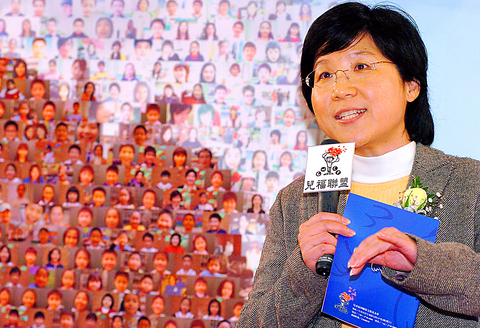
PHOTO: FANG BIN-ZHAO, TAIPEI TIMES
"To a non-profit organization like us, good image and accountability are our core values. Once they are questioned, the very existence of the organization will fall apart," Children Are Us Foundation CEO Wu Ting-fang (
Non-Profit Organizations (NPOs) are usually charity organizations whose primary objective is to support matters of public concern. They don't operate to generate profit. NPOs can been seen as a powerful supplement to government inefficiency and inflex-ibility, in terms of social welfare services and distribution of resources.
In Taiwan, there are tens of thousands of such organizations that are funded by donations from private and public sectors. However, without well-defined regulations and a central body to supervise the operation of groups like Children Are Us, such incidents are likely to happen again. And once the general public loses faith in a group because of misunderstandings about the law and how it is supposed to operate then it will likely collapse and this will obviously impact on the people it was intended to help.
Underpaid or overpaid?
Thankfully, a newly established alliance of local NPOs, the Taiwan NPO Self-Regulation Alliance (台灣公益團體自律聯盟), is setting out some improvements. Founded one year ago by 31 not-for-profit groups such as the Eden Social Welfare Foundation (伊甸社會福利基金會), the Red Cross Society of the ROC (中華民國紅十字會) and United Way of Taiwan (中華社會福利聯合勸募協會), the alliance was officially established two weeks ago and already has over 60 members who have joined together to develop a transparent and accountable mechanism for donating and fund raising.
As Feng Yen (
If only things were that simple.
The only law that regulates NPO operations is the united fund raising regulation which went into effect in 1953. The regulation was intended to limit the government's fund raising efforts for the purpose of entertaining the armed forces. As the country became more wealth in the late 1960s and early 1970s, local NPOs began to thrive and the fund raising regulation was the only law they had to comply with.
The Social Affairs Department of the Ministry of the Interior oversees the application of the fund raising law, but it neither has the resources nor the manpower to supervise such a huge body of social groups.
"If you are a law-abiding group and try to follow the regulations, the agency will keep a close eye on you. But if you don't care about the law and just go fund raising your own way, you will be fine until something goes wrong and then you are on every news channel. Then the agency will pay more attention on you," Feng said.
Such was the situation in the pre-1999 period.
In the spotlight
Six years ago, the 921 earthquake destroyed many people's homes and also brought to light the fact that the fund raising regulations were seriously out of keeping with the times. The disorderly management of relief funds made people start to ask questions about where there donations were going.
A fund raising bill was drafted after the earthquake that aimed to create a better environment for both NPOs and those who make donations. The bill also places restrictions on fund raising campaigns initiated by the government.
But, six years later, the bill still lies under pile at the Legislative Yuan waiting to be passed.
The Taiwan NPO Self-Regulation Alliance, therefore, has come at a good time. It has two objectives: to push through fund raising bill legislation and to promote self-imposed higher standards on NPOs that will ensure transparency and accountability.
Self-reforming
"Apart from the legal regulations, NPOs themselves need to establish a mechanism for the general public to have access to the operations of the organizations. People have the right to know how the money is raised, how it is managed and what the group has done and achieved with the funds," Feng said.
One source of possible abuse by NPOs lies in the fact that many of them shun their duty to make their financial reports public. According to statistics gathered by the Directorate General of Budget, Accounting and Statistics (
The alliance is urging charity groups to disclose their financial reports and allow public access to information.
Charity begins at home
According to Feng, more than 50 percent of the total amount of annual donations goes to major religious groups, while United Way of Taiwan, the only fundraising organi-zation that distributes funds to smaller NPOs, takes around NT$100 to NT$200 million, of the total NT$42 billion pie.
For small-to-medium-sized organizations, the alliance offers an agency for growth through counseling and exper-ience and information-sharing. Not only can these groups gain legal and financial information and know-how, but they can also become more visible through the alliance's assistance.
"Most of our members to date are small- and medium-size groups. But if we can all live up to these standards and let the public know this is how it should be done, then we can place pressure on major NPOs to fulfill their obligations to be transparent and accountable," Feng said.
As for the general public, the alliance also sets a goal for public education.
"Givers should also be smart consumers. If people know it's their right to find out whether or not their money is used efficiently and sensibly, then NPOs will have to pay more attention to accountability if they want to seek recognition and support," Feng said.
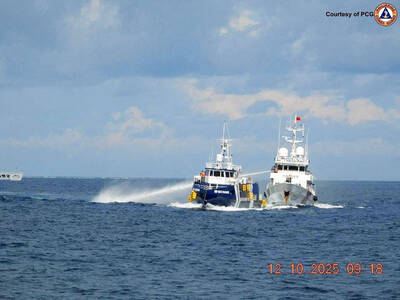
Many people noticed the flood of pro-China propaganda across a number of venues in recent weeks that looks like a coordinated assault on US Taiwan policy. It does look like an effort intended to influence the US before the meeting between US President Donald Trump and Chinese dictator Xi Jinping (習近平) over the weekend. Jennifer Kavanagh’s piece in the New York Times in September appears to be the opening strike of the current campaign. She followed up last week in the Lowy Interpreter, blaming the US for causing the PRC to escalate in the Philippines and Taiwan, saying that as
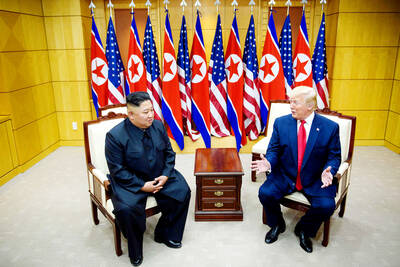
US President Donald Trump may have hoped for an impromptu talk with his old friend Kim Jong-un during a recent trip to Asia, but analysts say the increasingly emboldened North Korean despot had few good reasons to join the photo-op. Trump sent repeated overtures to Kim during his barnstorming tour of Asia, saying he was “100 percent” open to a meeting and even bucking decades of US policy by conceding that North Korea was “sort of a nuclear power.” But Pyongyang kept mum on the invitation, instead firing off missiles and sending its foreign minister to Russia and Belarus, with whom it
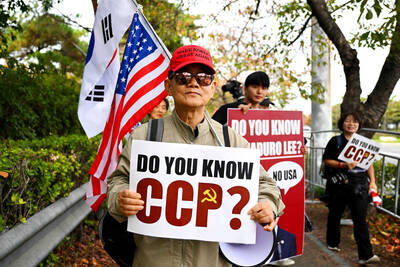
The Chinese Communist Party (CCP) has a dystopian, radical and dangerous conception of itself. Few are aware of this very fundamental difference between how they view power and how the rest of the world does. Even those of us who have lived in China sometimes fall back into the trap of viewing it through the lens of the power relationships common throughout the rest of the world, instead of understanding the CCP as it conceives of itself. Broadly speaking, the concepts of the people, race, culture, civilization, nation, government and religion are separate, though often overlapping and intertwined. A government
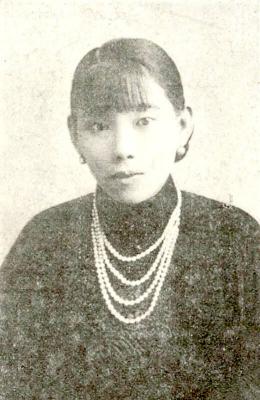
Nov. 3 to Nov. 9 In 1925, 18-year-old Huang Chin-chuan (黃金川) penned the following words: “When will the day of women’s equal rights arrive, so that my talents won’t drift away in the eastern stream?” These were the closing lines to her poem “Female Student” (女學生), which expressed her unwillingness to be confined to traditional female roles and her desire to study and explore the world. Born to a wealthy family on Nov. 5, 1907, Huang was able to study in Japan — a rare privilege for women in her time — and even made a name for herself in the